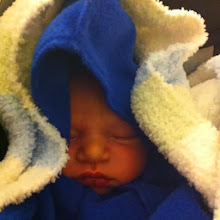
As the sun melted into the Mediterranean on Friday evening, the promise of something extraordinary floated in the air. Every Shabbat at Yemin Orde youth village is unique, but this weekend the village had the opportunity to host twelve Rwandan teachers who will soon open the Agahozo Shalom Youth Village in Rwanda. After an intense day of training by the Yemin Orde Intiatives Educational Institute, the eleven teachers, along with two Ethiopian Yemin Orde graduates who will join them in Rwanda, prepared for their first ever Shabbat experience. They gathered at a lookout over the Mediterranean, and were joined by fifteen children of Yemin Orde who came from Ethiopia, Sudan, Brazil, Kazakhstan, and Ukraine. Two of the children were refugees from Darfur who had fled to Israel and studied at Yemin Orde. As the children and teachers talked and sang, smiled began to spread around the circle and the beginning of a bond was formed. The children understood that these Rwandan teachers were going to build something great and that they were a part of it, and the teachers understood that these children were examples of the success they hoped to achieve in their own country.
 Perhaps coincidently, the words painted on the floor in the center of this multicultural circle read, “Ain Menatzchim B”Alimut,” “We cannot win with violence,” a central value of Yemin Orde and a message that the Rwandan teachers, each themselves survivors of the 1994 genocide, already embodied.
Perhaps coincidently, the words painted on the floor in the center of this multicultural circle read, “Ain Menatzchim B”Alimut,” “We cannot win with violence,” a central value of Yemin Orde and a message that the Rwandan teachers, each themselves survivors of the 1994 genocide, already embodied.
After singing and dancing in the synagogue, the teachers joined their new Yemin Orde friends for Shabbat dinner in the dining hall. During dinner, Wilton Ndayisenga, principle of the Agahozo Shalom school, addressed all three hundred children. “We are here to share our experiences with you,” he said in a booming voice, “we want to learn from you and learn with you. Together we are going to change the world.”
Later that evening, the children and teachers gathered for an activity. Language was not necessary for this cultural exchange, as each group of children taught a dance from their country. The Rwandan teachers stole the show as they led the children in clapping, singing, stomping, and twirling according to Rwandan tradition. “This is the dance one does before giving the woman you love a cow,” they explained. The kids couldn’t get enough and danced all the way back to their houses that night.
On Shabbat morning Ofer Yerushalmi, director of Yemin Orde, and the children led the Rwandan teachers on a dynamic tour of the village. In Yemin Orde, every building, tree, wall, and stone is an opportunity to teach a message of leadership, cultural pride, or tikkun olam. The teachers were especially impressed by the “godjo,” the traditional Ethiopian hut which reminded them of homes in Rwanda.
Shimon Solomon, Yemin Orde graduate who will be working at Agahozo Shalom for two years, addressed the children of the village during lunch and told of the impact Yemin Orde has had on his life. “Through the army, my first and second degrees, my work in the Ministry of Education, and my current job as director of an absorption center, Yemin Orde and Dr. Chiam Peri are my role models. And now I am going to take what I have learned here to orphans in Rwanda.” The children beamed. The village they called home was making a difference in the world. They were making a difference in the world.
As the weekend came to a close, Yemin Orde had the privilege of hosting Nobel Prize laureate Elie Wiesel and his wife Marion to celebrate the opening of a new children’s home. In a historical encounter, Mr. Wiesel, himself a child survivor of the Jewish genocide, imparted the wisdom of his experience to the Rwandan team.
The Rwandan teachers boarded the bus back to Jerusalem amid myriad hugs from the children and handshakes with Dr. Chiam Peri. “I learned from you not to only care about myself,” said Avraham, an Ethiopian student in the ninth grade who had spent the weekend with the Rwandan team. “Your actions speak louder than your words,” replied Deo, who will teach computer science at Agahozo Shalom, “What we have experienced here is the beginning of something great, it has struck a match.”
The flame will not only light up Agahozo Shalom, but it has made Yemin Orde brighter as well.







